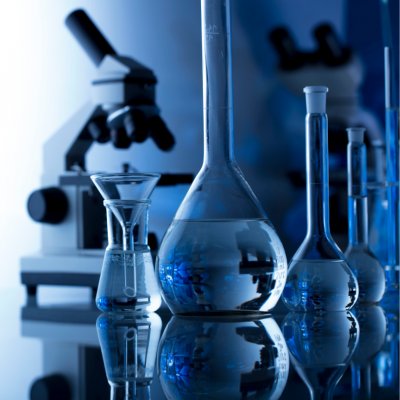As a second-year student attending a professional event, I had just sat through a presentation that was, for lack of a better term, Greek to me. The intricacies of the topic had me lost in a maze of jargon and complex diagrams. Yet, mere hours after that presentation, I found myself engrossed in a conversation with the speaker at the event happy hour. The difference? Fifteen minutes of a genuine conversation illuminated what a two-hour presentation could not.
The True Aim of Communication
Many professionals in the realm of science and medicine mistakenly prioritize persuasion or the desire to "win" an argument. But true communication aims for understanding. By shifting the goalpost to mutual understanding, and leaving the decision-making to the audience, the outcome becomes richer, and more insightful.
Navigating the Communication Disconnect
Unfortunately, the bridge between groundbreaking scientific discoveries and their broader comprehension is fraught with gaps. The challenge here is multifaceted. There's often a lack of access to effective communication tools or channels, insufficient training in disseminating information, and notably, a significant time constraint in the daily lives of these professionals. It's not about the years dedicated to researching a topic; it's about the daily bandwidth. These professionals juggle numerous tasks, with communications often relegated to the bottom of the list. Consequently, this crucial aspect either never happens or is executed poorly due to these time constraints. Additionally, there's a lack of incentive that further demotivates professionals from prioritizing this vital role.
In any professional sphere, but particularly in healthcare fields like physical therapy, the gap between knowledge and application is a chasm that deserves attention. On one side of this divide are those who believe that disseminating their knowledge isn't part of their professional responsibilities. They may feel their job is complete once the research is published or the patient is treated, overlooking the ripple effect that their expertise could have on the broader community or even globally.
Another group consists of professionals gripped by insecurity or social awkwardness, who may underestimate the value of their own insights. This group often fears criticism or believes they lack the eloquence to share their knowledge effectively. Their self-doubt turns into a barrier that prevents valuable information from reaching those who could benefit from it.
Still, there are those who fall into the category of simply not knowing the 'how-to' of effective communication. They might be masters of their craft, deeply invested in research or clinical practice, but they lack the tools or training to disseminate that information widely. These are the professionals who understand the value of sharing knowledge but are paralyzed by not knowing the best avenues or methodologies for doing so.
This multi-faceted chasm might offer some insights into the shocking 17-year journey it often takes for newly published research to integrate into clinical practice. Such a lengthy span is not just a delay; it represents missed opportunities for improved patient care, increased efficiency, and enhanced quality of life for countless individuals. The toll this takes is more than just academic; it's measured in years of patient suffering, in wasted resources, and in the erosion of trust between healthcare providers and those they serve. Each year of this 17-year lag represents a year we've fallen behind in our collective commitment to improve lives through the best available knowledge and practices
Seeking the 'Aha!' Moments
Every communication professional, including myself, thrives on those "Aha!" moments. The aim is always clarity. When someone says, "I never thought about that" or "I hadn't seen it that way," it's an affirmation of understanding achieved. With today's technology, the distance between a message and its recipient is no more than the thickness of a smartphone screen. Yet, so much gets lost in translation. The tools exist, many freely accessible, yet the mastery over their potential is seldom realized.
Embracing Dual Roles in Science
The solution is evident. Scientists and clinicians need to wear the dual hats of a researcher and a communicator. Effective communication must be embedded in their professional ethos, not as an added bonus but as a fundamental responsibility. It’s crucial for the scientific community to recognize this and to incentivize and facilitate effective communication.
The Responsibility of Understanding
But here's the catch: Communication is a two-way street. The onus of understanding doesn't lie solely with the receiver. It's incumbent upon the sender, the communicator, to ensure their message is comprehended. I often equate it to the role of a third-grade teacher. Yes, I could spew out the entire curriculum in a matter of weeks, leaving bewildered faces in my wake. But that's not the job. The job is to ensure that every child understands. Similarly, in the realm of science, mere communication isn't the endgame. Understanding is.
To echo a sentiment close to my heart: Science isn't finished until it's understood. As communicators, as educators, as scientists, our mission remains incomplete until our audience grasps the essence of our message. If the message is lost in transit, it's our duty to retrace our steps, devise new strategies, employ fresh methods, and persistently strive towards that singular goal: Understanding.
Charting a Path Forward
As we stand at the crossroads of groundbreaking science and impactful communication, we must recognize the profound influence we can wield by effectively sharing our knowledge. The intricacies of orthopaedic physical therapy, like many scientific fields, require more than just discovery; they demand dissemination. We urge each one of you to harness the tools at your disposal, seek out training, and dedicate time to refine your communication skills. Remember, our mission isn't solely to discover, but to ensure that our discoveries resonate, enlighten, and empower. Let's commit to making understanding a priority, shaping a future where science doesn't just speak—it's heard, felt, and embraced by all.
The author declares no conflict of interest.
Author Bio:
Jimmy McKay is a physical therapist and communications professional. He has a degree in Physical Therapy from Marymount University and a degree in Journalism and Mass Communication from St. Bonaventure University. Jimmy was a rock radio DJ for 15 years, most recently as Program Director and afternoon drive host for 97.9X (WBSX-FM). He hosts two of the most downloaded physical therapy podcasts, PT Pintcast and NPTE Studycast with more than 5 million downloads. He has presented at State and National Conferences. Was appointed as a trustee for the Foundation for Physical Therapy research and was the captain of the victorious team in the Oxford Debate at the 2019 NEXT Conference.

